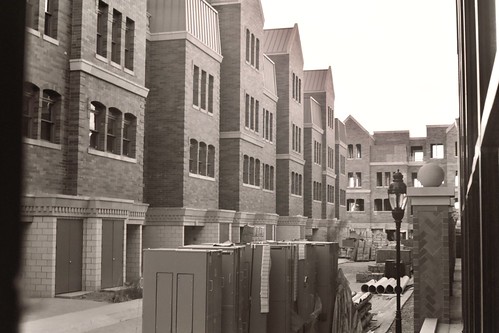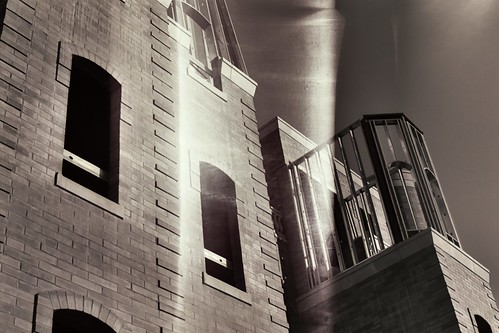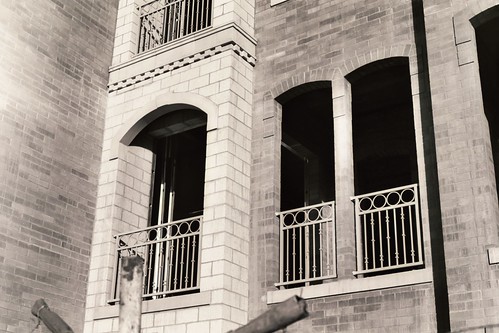NOTE: Part of an essay I wrote that I thought was charming. I just like making indepth bullshit interpretations. I'm not sure I meant any of this, but it makes sense, right?2. Find a PORTRAIT photographer of national prominence (not a local photographer or someone from a trade magazine). Describe what he or she does best. Apply it to what you have learned in class, or what you hope to learn in the future about photography. Also, discuss how that photographer uses light and composition to make photographs work. Exclude Ansel Adams.
Ryan McGinley has suddenly gotten a lot of attention. He’s barely 32, but when he was 24, he was the youngest photographer to have a solo show at the
Whitney Museum of American Art in New York City.
American Photo Magazine named him photographer of the year in 2003, and world-famous weird rock band
Sigur Rós used one of McGinley’s photos as an album cover. The picture features four people running naked across a highway, a theme that is omnipresent in McGinley’s work.
Almost all of his portrait photography is nude. His style evolved from documenting his artsy friends in real-life, everyday situations (for some reason his friends were constantly naked) such as wrestling, playing with fireworks, swimming and whatever else it is that naked people do.
Soon, McGinley was too famous for his own good and had to start constructing his portraits. He said he didn’t have time to wait around for his friends to do interesting things, so he fabricated fantastic, bleak scenery but he kept the naked theme.
Perhaps minimalism is taken to an extreme with McGinley. Maybe not. In his series called
Moonmilk, the young New York photographer took hundreds of snapshots of his naked friends in huge, looming caves that were discolored with tinted spotlights. The result is something out of a bad sci-fi movie, but somehow McGinley makes it beautiful.
My favorite portrait by McGinley is called
Lily (Black Eye) which features a naked woman (presumably Lily) holding a cigarette to her mouth and a lighter clutched in the other. She is barely, casually covering her breasts. Behind Lily is a couple of flawless white sand dunes. Lily’s hair is blowing in the wind and, while it’s barely noticeable, she has two, huge, black shiners under each eye.
Poor Lily. As she’s about to light her cigarette, she looks incredibly exposed, somehow even more naked than naked. First, the black eyes, glancing timidly off to the side, inferring that she is abused. But unlike some victims of domestic abuse, she isn’t covering it up with makeup. It’s very in your face.
Then, there’s the cigarette, which
Kurt Vonnegut, Jr. once called a form of “slow suicide”. It is revealed that Lily is abusing herself, perhaps more than her assailant.
But she’s naked in a hostile desert. And the minimalism almost becomes claustrophobic, drawing the eyes right into Lily’s emaciated, exhausted frame. We can’t look away.
The shadows and the harsh lighting really tie the photo together.
Ryan McGinley’s talent isn’t really in nudie photos; it’s in exposure. Revealing a layer of humanity through his lens so that the viewer can also feel exposed. It’s hard not to feel like you’re the naked one when viewing Lily.
Who wouldn’t want that talent? But that’s not exactly something you can learn in a classroom. You have to be the kind of person who is able to expose that kind of humanity. Some people won’t show it.
The best way to learn it is probably watching masters like McGinley work and continuing to try to understand the layers we hide under.




